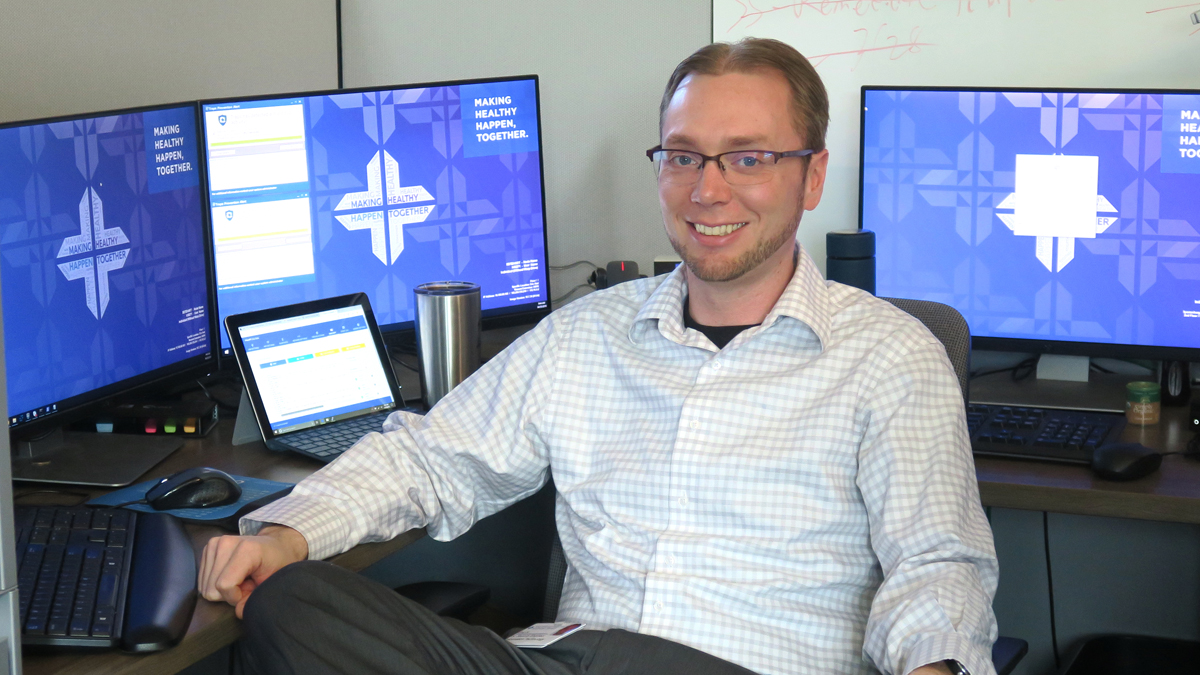Eric Hart, IT at Spartanburg Regional Healthcare System
Growing up on the Delmarva Peninsula on the Eastern Shore of Maryland and Virginia, Eric Hart fell in love with computers and technology. His passion led him to a computer programming degree and 10 years as a contractor with the Department of Defense, where he specialized in information assurance. In laymen’s terms, he was a data cop.
Five years ago, he learned of a start-up venture within Spartanburg Regional Healthcare System that was in need of a specialist in the realm of information technology and IT assurance. Their focus was on accelerating the search for cures for cancer. Eric believed this would be “very interesting, very important work” and his new career in the medical field was launched.
Today, he is the team leader for the facility’s information security engineers, where “one of our biggest challenges is meeting the needs of the availability of all our technology resources.”
“In health care today,” Hart said, “technology is everywhere. Physicians do examinations on computers. Staff do their charting on computers. Imaging procedures such as CT scans and MRIs are all computer-based. From my perspective, it’s important to make sure these resources are always available to doctors and nurses and, to some extent, to the patients as well. By going to My Chart, patients can view all of their medical information from home, which is a great feature.”
It’s Hart’s responsibility to make sure all of that technology is functioning securely so patient information can be accessed only by individuals who are authorized to have it.
In IT terminology, Eric Hart is a Blue Team Member, which, in football terms, would mean he plays on the defensive side of the ball. In a hospital environment, that’s both an essential component and an important priority.
Technical solutions are already in place to help stave off malware attacks on the hospital, but new IT security problems pop up all the time. Among the most challenging issues Hart must deal with proactively are phishing attacks aimed at convincing users of the Spartanburg Regional Healthcare System to give up the passwords and other credentials that allow them to access the hospital’s services.
Another more visible – literally – responsibility is assuring the security of the in-room “smart display boards” that have replaced the dry-erase boards long used by medical staff to note information on each patient.
Now, all that important information – everything from diagnosis to meal plans and dietary restrictions – can be displayed on the patient’s hospital TV screen. Because much of it is confidential, that information must be monitored, updated and, above all, secured.
Asked about the importance of IT security in hospitals, Hart noted, “The positions open far outpace the candidate pool. It’s a huge field today.”
As for himself: “It’s important to me to know that, at the end of each day, I have helped support and protect every patient’s experience at the hospital at genuinely important moments in their life, from the birth of a child to a serious injury to themselves or a loved one.”
By Bill Farley
